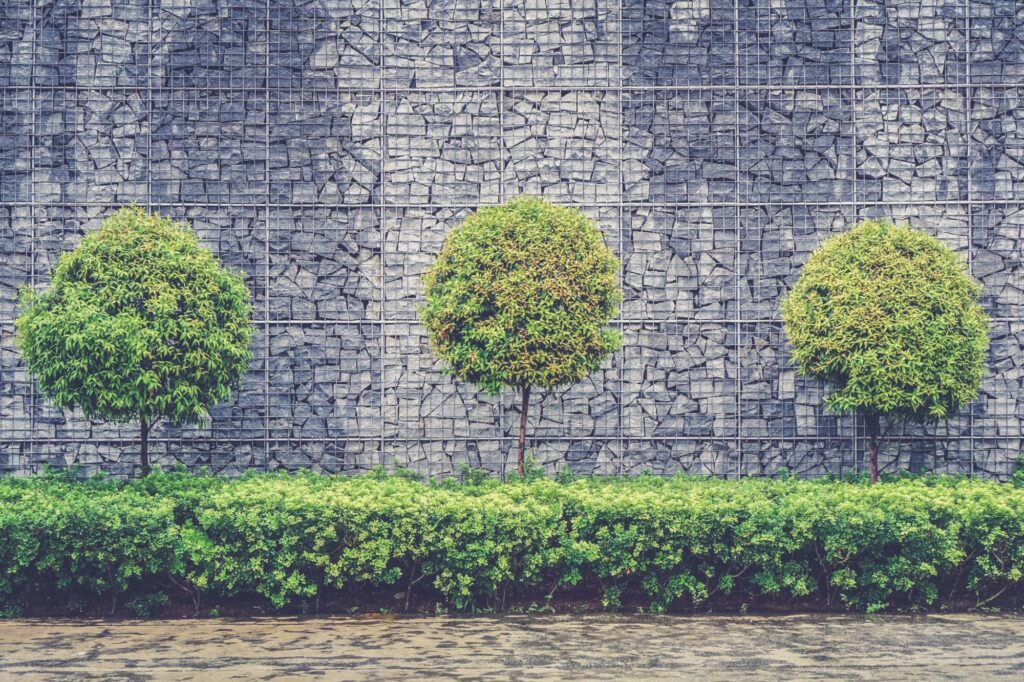It is difficult to imagine a country house without a fence around the yard or garden. In many cases, it is not even a reliable protective barrier, more a matter of providing some privacy and very often – an aesthetic element of the landscape design of the property. A certain type of yard fencing – the gabion fence (also called gabion wall) – requires some special attention, since it has a lot of advantages compared to other fencing options.
Gabion fence – what is it?
A gabion fence is a relatively new type of decorative fencing which is gaining more and more popularity recently, especially among fans of non-conventional ideas. Using simple and understandable language – gabion fences are made of cells (usually made of metal) of various shapes and sizes placed next to each other and on top of each other and filled with concrete, rocks, gravel or other materials. This is an easy and relatively affordable way to build a spectacular fence with a contemporary look in both rural and urban settings.
This way of building a fence is fast, does not leave a construction mess after construction, and often even in the cells can be placed some of the remnants of the clearing of the plot and construction works – stones found on the site or excess gravel or crushed concrete.
Gabion fence – advantages
If you still have not decided whether this type of fence is suitable for your site or not, we recommend that you pay attention to the following advantages of the decorative gabion walls:
- Durability – a gabion stone fence will last for decades as metal and especially stone and concrete are extremely weather resistant.
- Attractive appearance – over time, the fence does not lose its original attractive appearance.
- Security – in addition to being an aesthetic element of landscape design, the gabion fence is a very practical and stable barrier that provides safety and privacy.
Wind and noise protection – a properly built gabion wall provides extremely good protection from wind and noise pollution. - Affordable price – gabion fencing is usually relatively affordable, especially when compared to a real stone masonry for example.
- Organic to the environment – with proper selection of the filling and construction, such a fence can become an almost natural part of the surrounding landscape.

Photo by Mike Enerio on Unsplash
How to choose the cage?
An integral part of the gabion fence is the cage (basket), which should be chosen very carefully so that the future structure will last for many years. Today, among the huge range of building materials, you can find quite a few different gabion cages options. They come in a variety of shapes and are made in different ways, but most often they are made of metal wire mesh – welded or woven – with semicircular, square or other shapes of the cells.
Whichever option you choose, the most important thing is that the material is stainless – in order to be weather resistant – and strong enough – to support the weight of the filling without breaking. The connection between the individual gabion cells must also meet these two conditions. And if you have the desire, free time and enough dexterity, you can even easily make the cages yourself.
How to choose the best fill?
The other main element of the gabion, after the quality cage, is the quality filler. As already mentioned above, besides being practical, very often the gabion fence has a decorative function and aims for aesthetic pleasure – and with a particularly good selection of material and design, it can even become an organic part of the surrounding landscape.
Natural stone or gravel is most often used to fill the gabions, but there are other options – concrete, bricks, artificial stone and other materials – even glass bottles, for example. Among the most popular types of natural stones for gabions are sandstone, cobblestone, rubblestone, pebbles, granite, etc.
To make the right choice in favor of one or another material you should consider the following:
- The size of the stones, bricks, etc.
- The shape of the individual particles – regular or irregular, rounded or ridged – sometimes it very much depends on the material itself.
- The natural properties of the material and above all its weather resistance – in accordance with the characteristics of the local climate.
- The appearance – and most of all, exactly how it will look as part of the entire gabion fence.
Sometimes, for an even more impressive appearance of the fence, designers and owners combine two or more different materials, alternate with other elements in the fence or even plant vegetation in the gabions. So, you can let your imagination run wild while planning your new gabion fence.

Comments